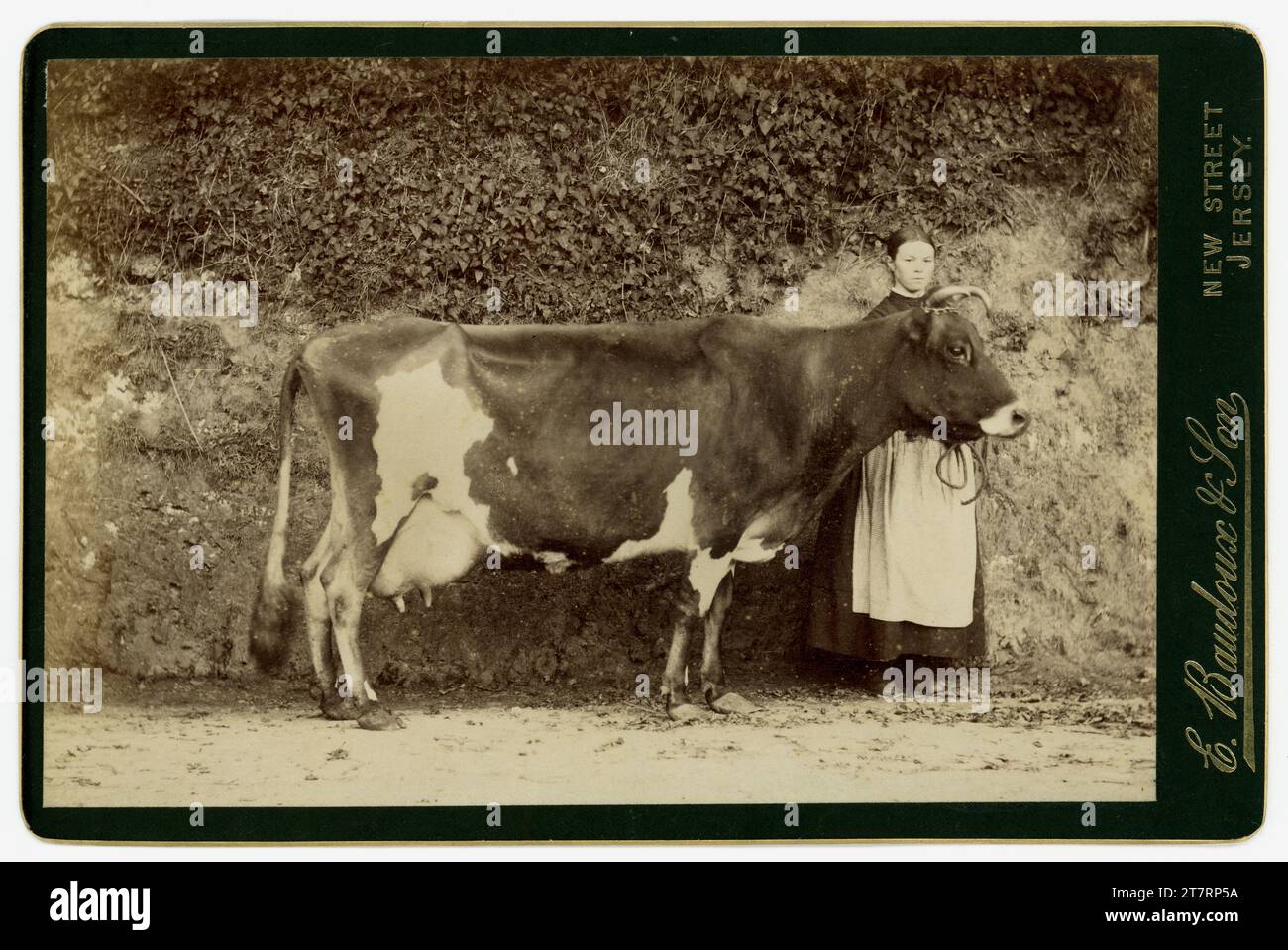Original, very clear, Victorian era cabinet card of dairy maid wearing an apron, standing next to a beautiful Alderney cow, possibly a prize winner. Photographed at the farm by the well-know island photographer of the time, Ernest Baudoux & Son (the son joined him in 1885). St. Helier, Jersey, the Channel Isles. This is thought to be an Alderney cow. The Alderney cow is originally from the Channel Isles and is a cross-breed of Guernseys and Jerseys. Dated to 1885, 1886 or 1887.

Image details
Contributor:
thislife pictures / Alamy Stock PhotoImage ID:
2T7RP5AFile size:
93.8 MB (4.4 MB Compressed download)Releases:
Model - no | Property - noDo I need a release?Dimensions:
7000 x 4684 px | 59.3 x 39.7 cm | 23.3 x 15.6 inches | 300dpiDate taken:
1886Location:
Jersey, Channel Isles, EuropePhotographer:
ThislifeThenMore information:
This image could have imperfections as it’s either historical or reportage.
The photographer, Ernest Baudoux (1828-1897), was a French emigre, although he had been running a photographic studio in St Helier since 1869. He was joined by his son, also named Ernest, in 1885, so the inscription ‘E. Baudoux & Son’ on the reverse of the card dates this image to somewhere between 1885 and 1887, when Baudoux sold his business to an English photographer named John Stroud.Source: Dark Lane Creative. Baudoux won a Gold medal 1884 While no "pure" Alderney cows exist any more, their blood-line can still be traced in some American herds. The 1860s saw huge changes in Alderney, with the construction of a number of forts. The island's population swelled to more than 5, 000 - today it stands at a little above 2, 000. Ms Crump said: "At that point in the 1860s, when the forts were all built in Alderney, and there was a huge influx in population... it was not possible for them to produce the amounts of milk that they needed." She added: "They imported Guernseys and some Jerseys. The result was that on the island a cross-breed between Guernseys and Jerseys appeared." And it was this breed that Ms Crump considers to be the "real Alderney cow". In an article written for the Alderney Society Bulletin, she described the cross-breed: "Some had in-turned horns and dished faces like Jerseys. "Most had robust bodies more like Guernseys, though with shorter legs and different colouring." In the same article, Ms Crump said the animals had "a very well attached milk bag". She said this offered advantages to the cow's movement and comfort, but also to anyone wishing to milk one. The reputation of the Alderney cow during its 80-year reign was a good one, and saw many registered officially as Guernsey cows to allow for export to the United States. While no "pure" Alderney cows exist any more, their blood-line can still be traced in some American herds. Source: BBC News.